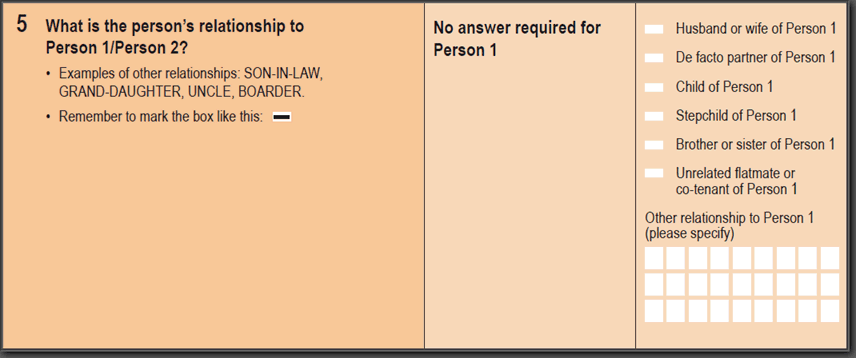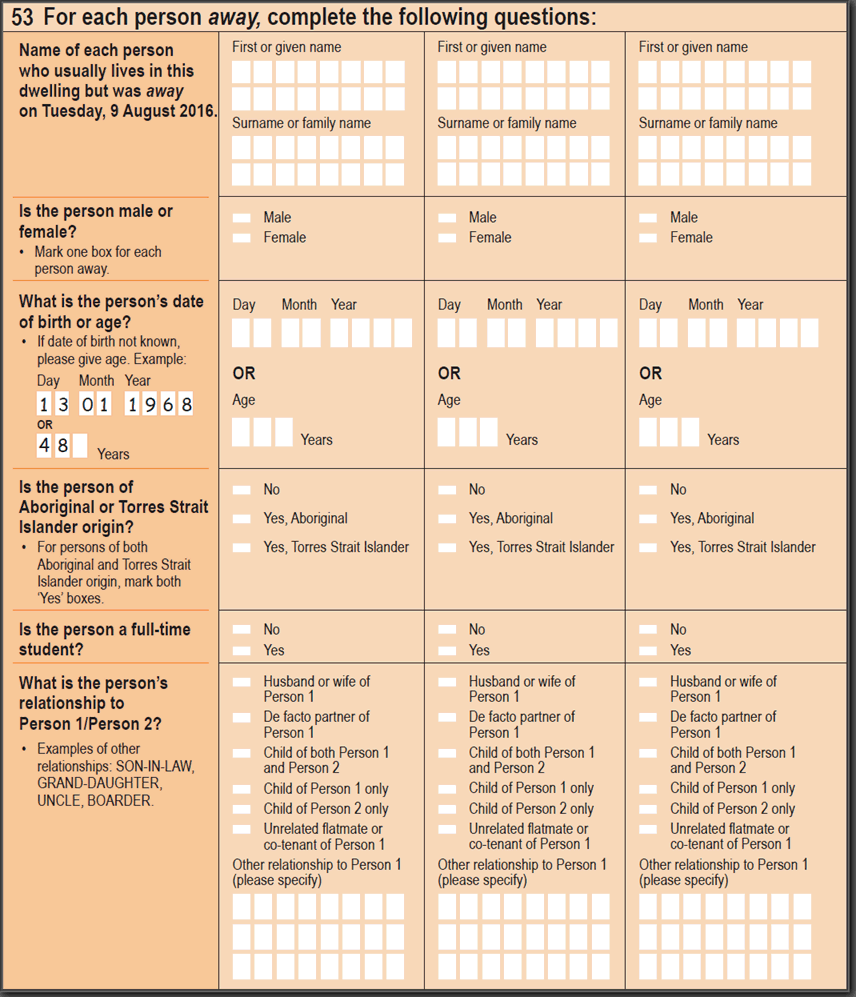Family Blending (FBLF)
This variable is applicable to couple families with children and has eight categories.This variable classifies couple families living in private dwellings, based on the parent-child relationships within them. Temporarily absent children are also taken into consideration.
How this variable is created
Family Blending data is derived mainly from the Relationship in Household question on the Census Household Form. Temporarily absent children are taken into consideration when classifying families. Images of these questions are provided below. Families are only derived for occupied private dwellings where a family composition can be determined from the relationship within the household.
Variable history
This variable was first introduced in 2006. No changes were made in 2016.
Non-response rate
Non-response rate only applies to data items that directly reflect responses to individual Census form questions. Family Blending does not have a non-response rate as it is a derived value created during Census processing for applicable families. For more information, refer to Understanding Census data quality.
Data usage notes
People may be missed from the persons temporarily absent section of the form as they are not present in the household when the form is being filled out. This can occur in both family and group households. Additionally due to form limitations a maximum of three people can be reported and coded as temporarily absent from the dwelling. If more than three people are absent from the household the additional persons are unable to be included on the form.
Reporting relationships in respect to 'Person 1' on the Household Form can make it difficult to establish the relationships which exist in a household, especially in those dwellings containing a blended family. In some cases, additional information such as surname, usual residence and marital status are used during data processing to help determine these relationships.
If a child is listed on the Census Form as 'Person 2' and both parents are usual residents, the response 'Child of both Person 1 and Person 2' is not available in the relationship question for 'Person 2'. In these cases an attempt is made to establish whether the child was a step-child or child of both parents using information such as surname. Preliminary analysis of the data indicates that despite these attempts there may be a small proportion of children coded to 'step-child' who may be a child of both parents. There may also be cases where the child of reference person (and a step-child of the partner) is incorrectly coded as a child of both parents.
Family Blending should be used carefully when comparing to other family data from within the ABS and for external organisations or agencies. The definition of a family can differ between different statistical collections and may not match Census definitions.
Further information
A definition for FBLF is available in the 2016 Census Dictionary with additional information available in the Glossary.
For information on family type and family composition, see the data quality statement for Family Composition.
For information on the Relationship in Household question and data item, see the data quality statement for Relationship in Household.
Household form question image
Questions 5 and 53 as they appear on the 2016 Census Household Paper Form:


A text only version of the online Census Household form is available from the Downloads tab.
 Print Page
Print Page
 Print All
Print All